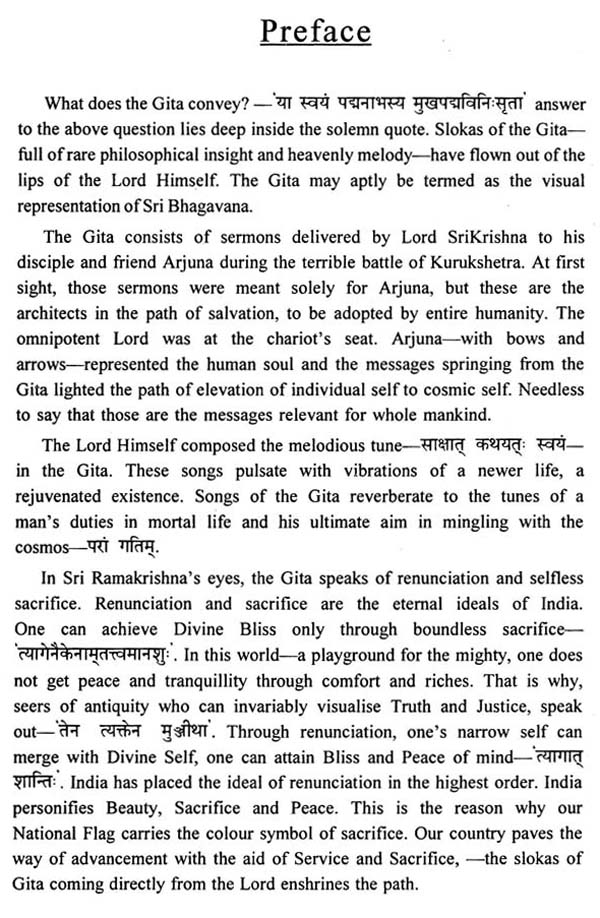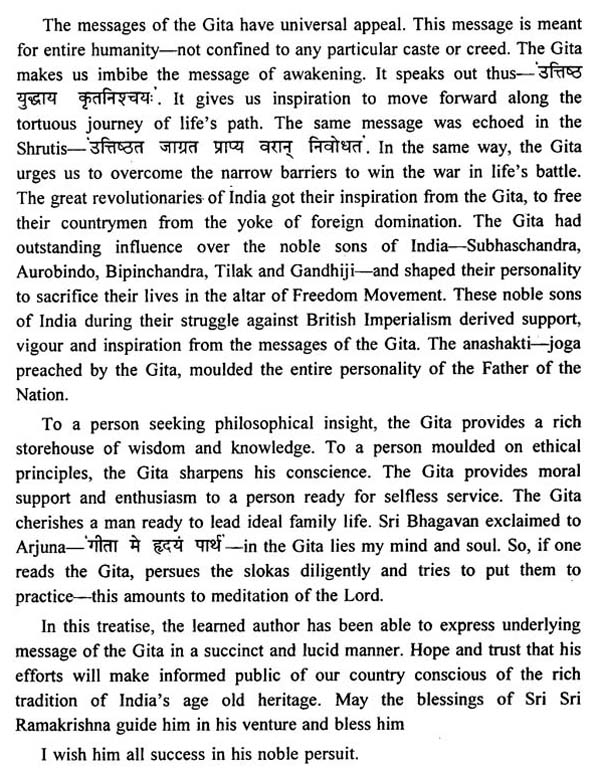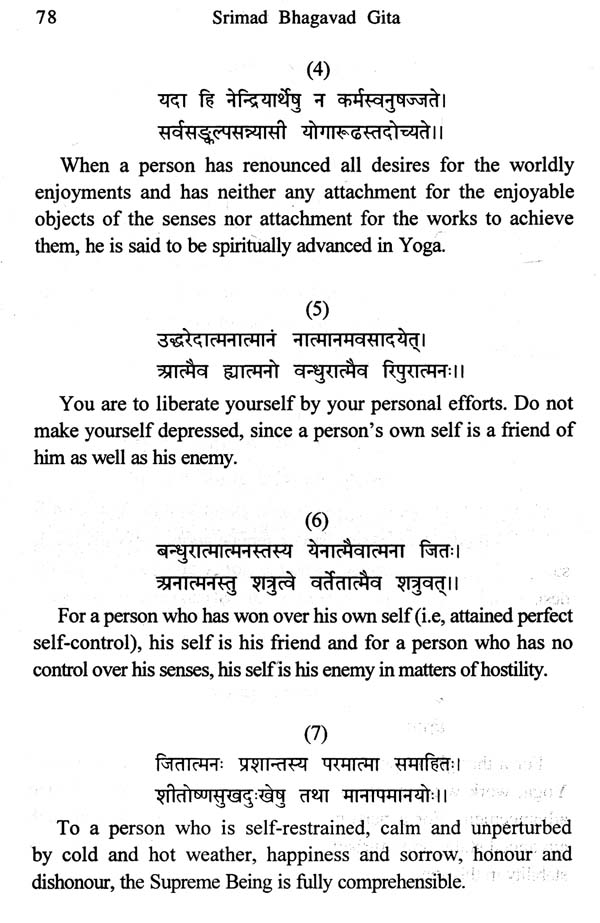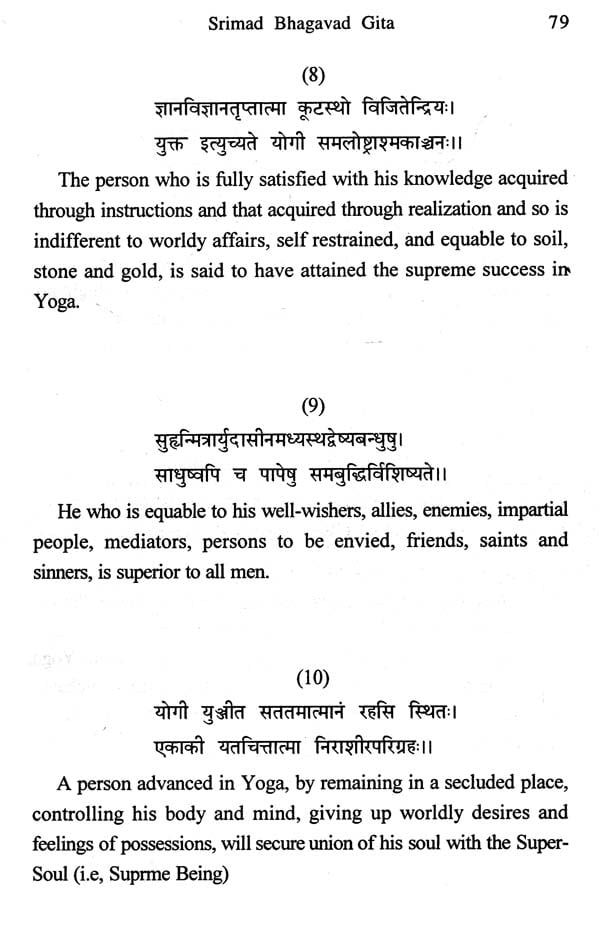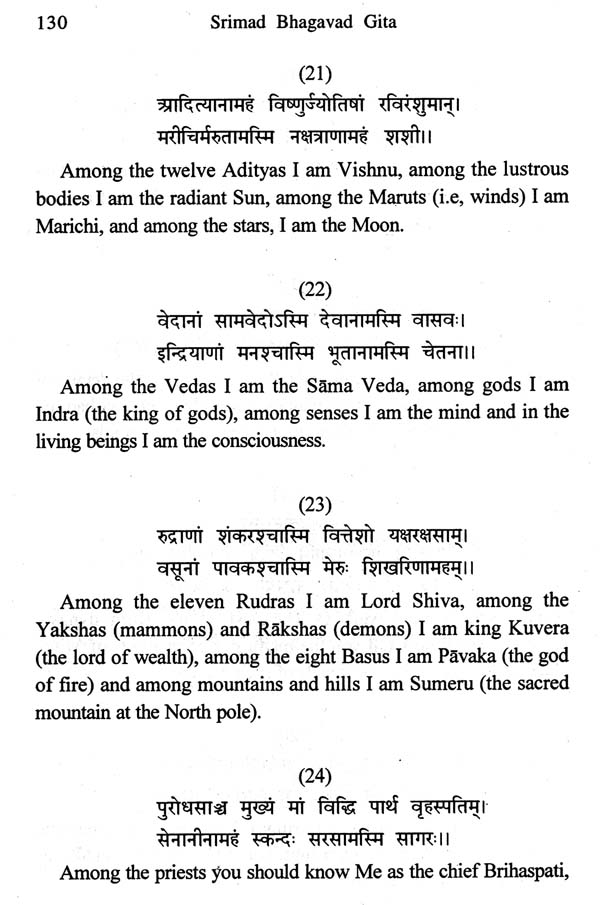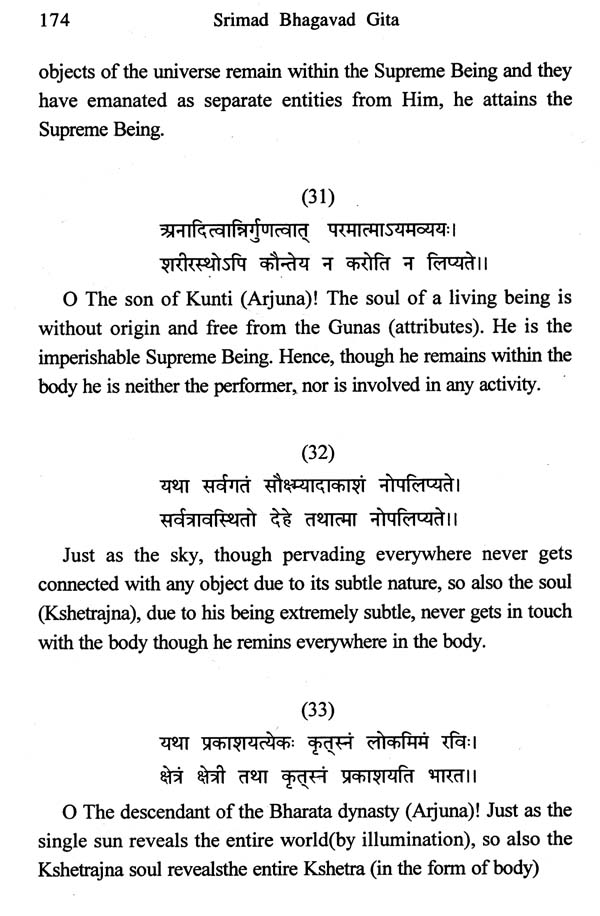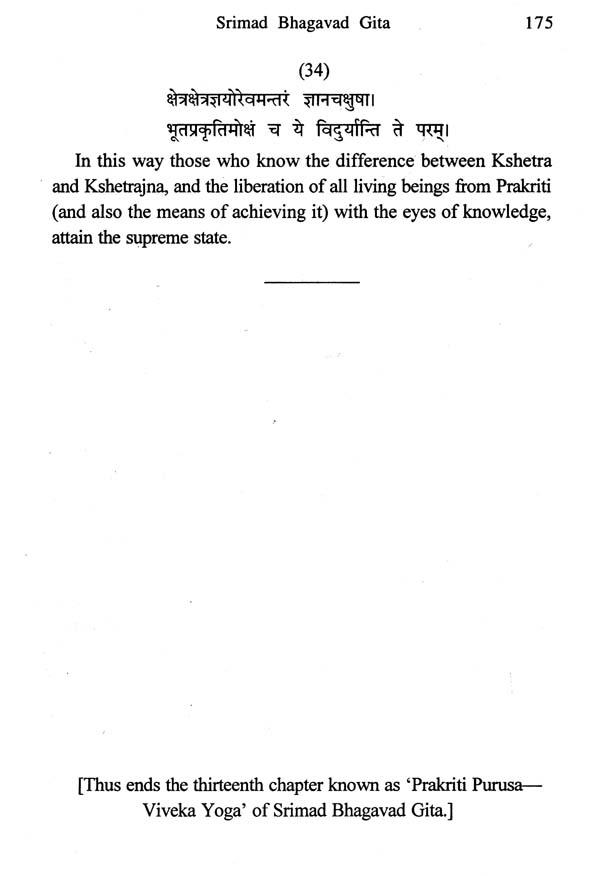
Srimad Bhagavad Gita
Book Specification
| Item Code: | NAX244 |
| Author: | Aniruddha Datta Gupta |
| Publisher: | Santa Ashram, Varanasi |
| Language: | Sanskrit Text with English Translation |
| Edition: | 2009 |
| Pages: | 235 |
| Cover: | HARDCOVER |
| Other Details | 8.50 X 5.50 inch |
| Weight | 340 gm |
Book Description
The book forming a part of Mahabharata, the holy book of the Hindus, begins with a question of the king Dhritarashtra, and Sanjaya's account of the battle of Kurukshetra in reply to that. Of the two combatant sides, the one known as the Pandavas consisted of the sons of the king Pandu like Yudhishthira, Bhima, Arjuna etc. and their associate monarchs. The‘ other known as the Kauravas consisted of the sons of Dhritarashtra like Duryodhana, Duhshashana etc. and their associate kings. The sons of Pandu, i.e, Pandavas had to be involved in war against their cousins Duryodhana etc. for several reasons like : (i) to recover their legitimate right of the kingdom at Hastinapur taken away from them by various illegal means by Duryodhana and his people, (ii) for the sake of their own safety, (iii) to give a fitting reply to the lot of sufferings and ignominy they had to undergo, because of the enmity of the Kauravas and (iv) to uphold their dignity. The war was inevitable when all attempts for a truce failed because of the stubbornness and insolence of Duryodhana who refused to give them even an extremely small piece of land without war. The kings of almost all parts of India participated in this war, taking sides with either of the two parties. In accordance with a precondition set before the war, Lord Sri Krishna who remained on the side of the Pandavas did not fight with arms in this battle. He acted as a charioteer for the chariot of Arjuna. He was friend, relative, guide and the spiritual master of the Pandavas. Just before the start of the battle, at Arjuna's request Lord Sri Krishna placed the chariot at a spot between the two armies. Arjuna wanted to know who the notable participants were and particularly those against whom he was to fight. But when he saw from that spot that his opponents included highly respected persons like his great trainer Dronacarya, his grandfather Bhisma, both of whom loved him dearly ever since his childhood and all around there were his near and dear friends and relatives with whom he was associated for a fairly long time, a very deep sense of grief over-powered him. He became bewildered. To take part in such a battle appeared to be a great sin to him. He refused to fight. At this critical hour, to restore Arjuna to normal state, to make him prepared for the fight, all that was said, instructions given to him by Lord Sri Krishna, which included discussions on many intricate religious topics formed this highly valuable holy book Gita. To Hindus Mahabharata is not merely an epic, but the history of a certain period of very ancient India of approximately five thousand years past. It also contains description of certain facts of still much earlier periods and some valuable discussions on Vedic religion. Before the start of this battle, at the request of the blind king Dhritarashtra, a person named Sanjaya was appointed by the great sage Krishna Dwaipayan Rishi, popularly known as Vyas deva (the author of Mahabharata) to describe a detailed account of the battle to the king from the begining to end. By the grace of Vyasdeva, Sanjaya acquired divine eyes and a special power by which he could roam about freely everywhere in the battle field invisibly to others and without being struck by weapons. He could see, hear, understand every thing and remember every details of the war and words spoken. Gita is a part of his account. Since it principally contains the words and instructions of Lord Sri Krishna who had identity with the Supreme Being, Lord Sri Krishna's instructions are considered as meant for not only Arjuna, but also for the people in general of this world. The contents of the book are said to be containing the essence of Vedic theological concepts. **Contents and Sample Pages**
